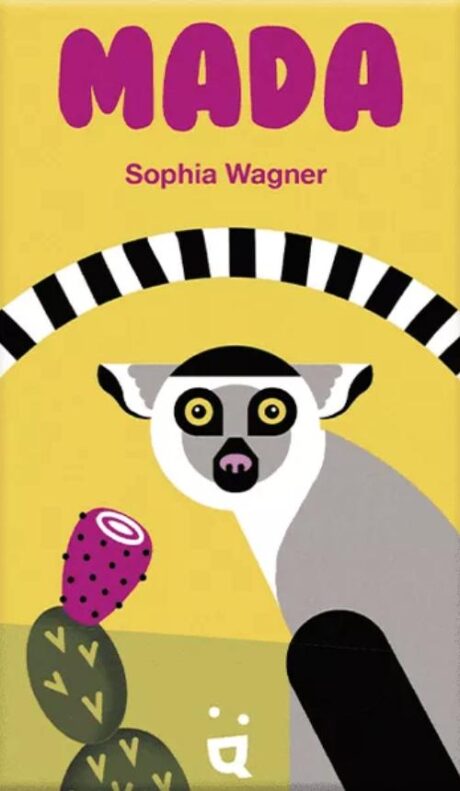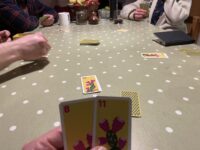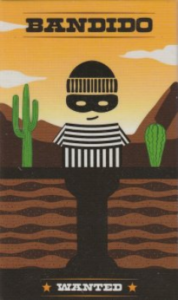- Learning time
- 5 minutes
- First play time
- 30 minutes
Mada
Designed by: Sophia Wagner
Mada is a simple card-game of luck-pushing, with a bit of hedge-betting thrown in.
The game is comprised of cactus cards numbered from 1-13, with higher numbers having more flowers (points), plus a few special cards we’ll explain later. Everyone is dealt three cards and on your turn you can choose to do one of three things: draw, play, or risk. Draw is simple: add the top card from the deck to your hand (but you can’t do this on your first turn! Maximum hand size is three cards!)
Play is playing a card from your hand to your stack in front of you: each card you play must go on top of the previous one, and must be of the same value or higher!
And risk is flipping the top card from the deck onto your stack: risky because you don’t know what you’ll get.
Mixed in to the basic three options are the special cards: the scorpion card means you lose a card from your hand – it must be played the instant you draw it. The single lemur moves the top card of your stack to the bottom, and the double lemur allows – in fact, it’s mandatory! – that you swap your stack with someone else’s.
As soon as anyone can’t play a legal card from their hand, can’t draw (-because they have three cards in hand) and/or they took a risk and ended up with a card lower than the top one in their stack, they are bust and the round ends. The bust player scores nothing, and everyone else keeps the top card of their stack into their score pile. Everyone keeps any cards in their hand, and everything else gets shuffled into a new draw deck for the next round. As soon as anyone has five cards in their score pile, the game ends and players count up points (the number of flowers on their cacti!) to determine the winner!
The guru's verdict
-
Take That!
Take That!
Apart from the double-lemur, the take-that evident is mostly from fate.
-
Fidget Factor!
Fidget Factor!
Turns move very fast.
-
Brain Burn!
Brain Burn!
The main thing is how lucky do you feel. You can take risks and they're fun when they come off. Conservative play, getting lower cards out and avoiding busting, might be safer. Or somewhere between those extremes...
-
Again Again!
Again Again!
It's fun, but there's not a huge amount of variety or a huge amount of control, so it's fun once in a while rather than over and over in one sitting.












Sam says
A fun little game from small-box publisher Helvetiq. They're not going to blow anyone's mind wide open, but they're good for what they set out to be - a fast-moving, frivolous game with a lot of portability. Decisions are light, but not absent, there's a lot of luck, but it's not entirely chance. A good one for adults and kids to play together! It works with two, but is best with 4 or 5, with the tension of playing a high card potentially busting you gets more pronounced with a little more time between turns.